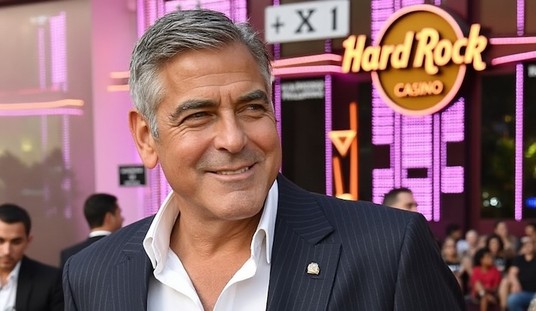
The man with a plan.
(Alexei Nikolsky/RIA-Novosti, Kremlin Pool Photo via AP)
The Russo-Iranian Axis grows stronger by the day, it seems. Here’s the latest courtesy of WSJ:
Russia and Iran have stepped up coordination inside Syria as they move to safeguard President Bashar al-Assad’s control over his coastal stronghold, according to officials in the U.S. and Middle East, creating a new complication for Washington’s diplomatic goals.
Senior Russian and Iranian diplomats, generals and strategists have held a string of high-level talks in Moscow in recent months to discuss Mr. Assad’s defense and the Kremlin’s military buildup in Syria, according to these officials.
This included a secret visit in late July by the commander of Iran’s elite overseas military unit, the Qods Force. Maj. Gen. Qasem Soleimani directs Tehran’s military and intelligence support for the Assad regime and is one of the most powerful leaders of the Islamic Revolutionary Guard Corps, or IRGC.
Iranian Foreign Minister Javad Zarif also visited Moscow last month to discuss Syria and other issues with his Russian counterpart, Sergei Lavrov.
Those visits “all come within the framework of this coordination,” Syrian Foreign Minister Walid al-Moallem told state media last week. “There is deep coordination on all levels between us and Moscow, and between us and Tehran, and I can say to whomever wants…they can join too.”
But Putin isn’t devoting all of his attention to the Levant — not by a longshot. Moscow’s other new forward operating base will open for business soon in Belarus:
Russian defense officials have said the base would be used to station Su-27 fighters. Russia already has some fighter aircraft in Belarus but this would be the first full-scale base there since Soviet times.
Russia has scaled back its military presence abroad, closing bases in distant Cold War allies such as Cuba and Vietnam.
However, a naval base at Tartus in Syria has recently become the focus of world attention as Russia has boosted its troop presence there in a move seen as bolstering its diplomatic influence in the region.
Russia already has military bases in ex-Soviet neighbors Kyrgyzstan and Armenia, which like Belarus are also members of a Eurasian Economic Union that Putin sees as the embryo of a new geopolitical bloc.
Last year Russia annexed the Ukrainian province of Crimea, partly due to fears it would be pushed out of its large naval base in the Crimean port of Sevastopol.
The creation of a base in Belarus may also be a signal to the West that Russia will not tolerate intrusion in its traditional sphere of influence.
It’s also a signal to the Baltic States (and perhaps Poland) that Russia means to reassert Soviet-scale dominance over the Near Abroad.
NATO’s response, such as it is, has been to play Red-on-Blue wargames in the Baltic — and losing:
In June 2014, a month after he had left his force-planning job at the Pentagon, the Air Force asked Ochmanek for advice on Russia’s neighborhood ahead of Obama’s September visit to Tallinn, Estonia. At the same time, the Army had approached another of Ochmanek’s colleagues at Rand, and the two teamed up to run a thought exercise called a “table top,” a sort of war game between two teams: the red team (Russia) and the blue team (NATO). The scenario was similar to the one that played out in Crimea and eastern Ukraine: increasing Russian political pressure on Estonia and Latvia (two NATO countries that share borders with Russia and have sizable Russian-speaking minorities), followed by the appearance of provocateurs, demonstrations, and the seizure of government buildings. “Our question was: Would NATO be able to defend those countries?” Ochmanek recalls.
The results were dispiriting. Given the recent reductions in the defense budgets of NATO member countries and American pullback from the region, Ochmanek says the blue team was outnumbered 2-to-1 in terms of manpower, even if all the U.S. and NATO troops stationed in Europe were dispatched to the Baltics — including the 82nd Airborne, which is supposed to be ready to go on 24 hours’ notice and is based at Fort Bragg, North Carolina.
“We just don’t have those forces in Europe,” Ochmanek explains. Then there’s the fact that the Russians have the world’s best surface-to-air missiles and are not afraid to use heavy artillery.
Is NATO a house of cards, ready to fall at the first gust of wind from the east?










Join the conversation as a VIP Member